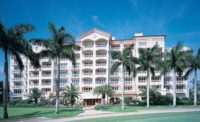The Gypsum Association announced the release of a new guidance document on abuse-resistant and impact-resistant gypsum panel products. Both panel product types are designed for application in high-traffic areas. When specified properly, abuse-resistant and impact-resistant panels can help preserve the condition and appearance of interior walls.
“Through constant innovation, GA member companies demonstrate their commitment to enhancing the quality of our built environment,” said Stephen H. Meima, executive director of the Gypsum Association. “Specialized products, like abuse-resistant and impact-resistant gypsum panel products, exemplify a trend toward optimizing performance while building on the fire protection inherent to gypsum.”
Although both products are designed to help minimize wear and tear, abuse-resistant and impact-resistant gypsum panels are targeted toward different types of damage. The guidance document cites the relevant ASTM test methods and classification levels associated with these products. By clarifying the differences between abuse-resistant and impact-resistant gypsum panels the document will assist architects, specifiers, and builders in selecting the most appropriate product for their projects.
The new guidance document explains that abuse-resistant gypsum panel products feature a higher density gypsum core than regular wallboard. Whether unfaced or faced with specially engineered paper or glass mat, these panel products resist surface abrasion and indentation. Appropriate applications include classrooms, hallways, and recreation rooms where scuffs and scratches are likely.
Impact-resistant panels combine the enhanced surface protection of abuse-resistant panels with additional reinforcement of core and/or facings. These products offer greater resistance to impact and reduce the potential for wall cavity penetration. Impact-resistant gypsum panel products are designed for environments accommodating heavier use, such as the continual movement of people and objects. Appropriate applications for impact-resistant products include gymnasiums, hospitals, loading docks, and stairwells.
“Abuse-resistant and impact-resistant gypsum panel products are growing in popularity,” Meima said, explaining the need for the document. “Damage resistance can potentially reduce life-cycle costs. As a result, a variety of sectors increasingly rely on these specialized performance boards.”

